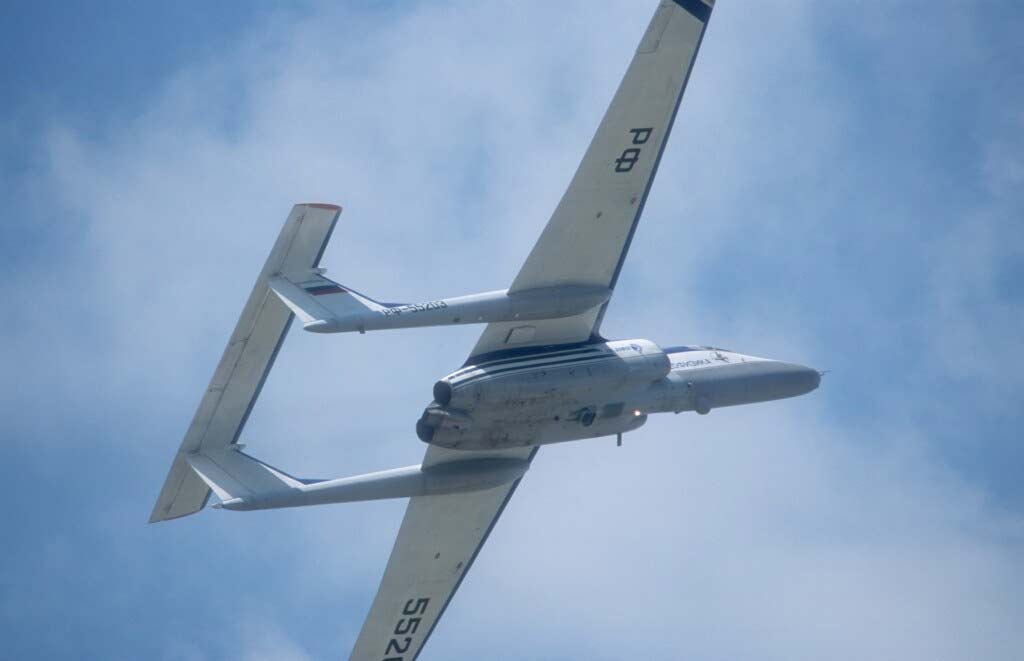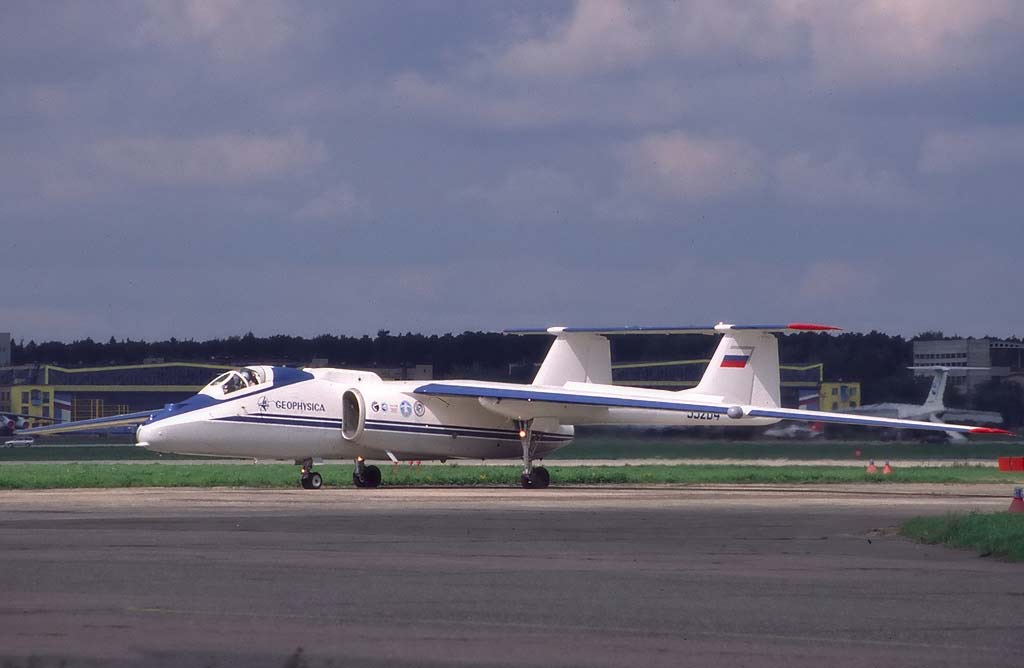High-altitude reconnaissance aircraft, Myasishchev M-55, known as Mystic, for atmospheric research and surveillance.
In brief
The Myasishchev M-55, codenamed “Mystic” by NATO, is a high-altitude reconnaissance aircraft initially developed by the Soviet Union and later continued by Russia. Designed in the 1980s, the M-55 features a unique tandem-wing configuration and is powered by two Aviadvigatel PS-30-V12 engines, each providing about 8,948 pounds of thrust. This aircraft achieves a maximum altitude of 70,000 feet, with a range of 4,000 miles and a maximum speed of 475 mph. It is equipped for various missions, including atmospheric research, electronic surveillance, and Earth observation, making it highly versatile in both civilian and military applications.

History of the Development of the Myasischev M-55 (Mystic)
In the context of the Cold War’s later years, the Soviet Union recognized the need for an advanced high-altitude aircraft capable of performing both reconnaissance and atmospheric research. This need was driven by the increasing demand for better surveillance capabilities against NATO forces and the desire to enhance scientific research capabilities in areas such as ozone layer studies and environmental monitoring.
The development of the Myasishchev M-55 began in the early 1980s, with the Myasishchev design bureau tasked with creating an aircraft that could reach extreme altitudes and carry a variety of payloads for different missions. The program aimed to replace the older Myasishchev M-17 “Mystic-A,” providing enhanced performance and versatility. The first flight of the M-55 occurred on August 16, 1988, marking a significant advancement in Soviet aviation technology.
The aircraft was designated “Mystic” by NATO, aligning with the practice of assigning codenames starting with ‘M’ to Myasishchev’s aircraft designs. The development of the M-55 was a response to both military and scientific needs, showcasing the dual-use potential of such high-altitude platforms during a period marked by intense technological competition between the superpowers.
Design of the Myasishchev M-55 (Mystic)
The design of the Myasishchev M-55 is particularly notable for its tandem wing configuration, which includes a set of forward swept wings at the rear and a conventional straight wing near the cockpit. This arrangement helps optimize high-altitude flight characteristics, such as stability and lift. The aircraft measures about 22 meters in length with a wingspan of 37.46 meters, and it is constructed primarily from aluminum and titanium, which provides strength while minimizing weight.
Powered by two Aviadvigatel PS-30-V12 engines, the M-55 is capable of sustained flight above 65,000 feet, a critical feature for its reconnaissance and research roles. The engine selection was critical for ensuring that the aircraft could maintain efficient operation in thin atmospheric conditions without compromising range or payload capacity.
The M-55’s avionics suite is designed to support a wide range of missions. It includes sophisticated navigation systems, sensors for atmospheric data collection, and equipment for electronic intelligence tasks. One drawback of its design, however, is the limited payload capacity compared to some other high-altitude platforms, restricting the amount of equipment that can be carried on any given mission.
Performance of the Myasishchev M-55 (Mystic)
The M-55 boasts impressive performance statistics. It reaches a maximum speed of 475 mph, can ascend to altitudes up to 70,000 feet, and has a maximum range of approximately 4,000 miles. These capabilities allow it to perform extended missions in a variety of roles from its primary function of reconnaissance to secondary roles in atmospheric research where stable, high-altitude flight is crucial.
In comparison to other aircraft of its time, such as the U-2 and the later developed SR-71, the M-55 does not achieve the same speeds but offers comparable altitude performance and greater flexibility in terms of payload and mission type, particularly in scientific applications.
Variants of the Myasishchev M-55 (Mystic)
The M-55 primarily exists in a single variant, although it has been configured differently for various missions throughout its operational life. These configurations have included setups for geophysical research, environmental monitoring, and electronic intelligence.

Military Use and Combat of the Myasishchev M-55 (Mystic)
While not designed as a combat aircraft, the M-55 has been crucial in military reconnaissance roles. It has not participated directly in battles but has been instrumental in electronic intelligence and surveillance operations, which are vital for gathering information on enemy activities and capabilities. Its ability to carry sophisticated imaging and electronic monitoring equipment allows it to monitor communications and other electronic signals from high altitudes, remaining out of range of most conventional anti-aircraft defenses.
The M-55 has been used by the Russian military and is also utilized by various government and scientific organizations for research purposes. It remains in service, primarily in Russia, although its unique capabilities continue to make it a valuable asset in global atmospheric research projects.
The Myasishchev M-55 (Mystic) stands as a prime example of dual-use technology in aviation, bridging the gap between military and scientific applications. Its design and performance characteristics make it uniquely suited for high-altitude missions, offering extensive capabilities that continue to serve both strategic and research-oriented purposes effectively.
Back to the Spy Planes section.